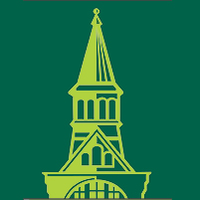University of Vermont Spatial Analysis Lab
The Spatial Analysis Laboratory (SAL) at the University of Vermont is an applied research facility that applies geospatial technology to challenges in natural resources planning and ecology.
2 datasets
Delaware River Basin High-Resolution Land Cover
High-resolution land cover dataset for the Delaware River Basin developed by the UVM Spatial Analysis Lab. The primary data sources were 2006-2008 leaf-off LiDAR data, 2005-2008 leaf-off orthoimagery, and 2013 leaf-on orthoimagery. Ancillary data sources such as LiDAR-derived breaklines for roads and hydrology were also used to augment the land-cover mapping. Land cover class assignment was done using a rule-based expert system embedded within an object-based framework. Land cover classes include: Land cover class 0 - Background 1 - Water 2 - Emergent Wetlands 3 - Tree Canopy 4 - Scrub/Shrub 5 - Low Vegetation 6 - Barren 7 - Structures 8 - Other Impervious Surfaces 9 - Roads 10 - Tree Canopy over Structures 11 - Tree Canopy over Other Impervious Surfaces 12 - Tree Canopy over Roads
UVM Spatial Analysis Lab request attribution in any publications, reports, derivative datasets, etc.
Pennsylvania Statewide High-Resolution Tree Canopy
This dataset maps tree canopy for the state Pennsylvania at a 1m resolution. The dataset was developed from publicly available LiDAR data, which was acquired in 2006, 2007, and 2008. LiDAR data was supplemented with leaf-on imagery acquired in 2010 through the National Agricultural Imagery Program (NAIP).
UVM Spatial Analysis Lab request attribution in any publications, reports, derivative datasets, etc. Please note that this dataset is independent from those areas we have mapped for Urban Tree Canopy (UTC) assessments. Future releases will integrate these two projects.
